International Symposium on the Future of Enzyme Modeling Held by Tianjin Institute of Industrial Biotechnology, Chinese Academy of Sciences (TIBCAS)
The "International Symposium on the Future of Enzyme Modeling" was held in Tianjin from October 23 to 25, hosted by the Tianjin Institute of Industrial Biotechnology, Chinese Academy of Sciences (referred to as "TIBCAS") and the National Center of Technology for Synthetic Biology (referred to as "NC SynBio"). The event was organized by the Key Laboratory of Engineering Biology for Low-Carbon Manufacturing.
The conference brought together top and well-known experts and scholars from 41 universities and research institutions across 11 countries, including Professor Arieh Warshel, the 2013 Nobel Prize winner in Chemistry, member of the U.S. National Academy of Sciences, distinguished professor at the University of Southern California, and director of the Warshel Institute for Computational Biology at the Chinese University of Hong Kong (Shenzhen), to share the latest achievements in enzyme computational simulation theory and innovative applications, explore more international cooperation opportunities, and promote collaborative research and resource sharing around the world. The conference attracted more than 300 experts and scholars.
Professor XIANG Hua, the legal representative and Deputy Director-General of TIBCAS, made an opening speech. He warmly welcomed the guests in attendance. He noted that Professor Arieh Warshel won the Nobel Prize in Chemistry in 2013 for his pioneering contributions to multiscale computational modeling of complex chemical systems, including enzymes. Futhermore, the 2024 Nobel Prize in Chemistry recognized the groundbreaking advancements in computational biology related to protein design and structure prediction, highlighting the crucial role of computational design in biological research. TIBCAS focuses on industrial bio-design, by innovation research in industrial biotechnology to drive the development of biomanufacturing and the bio-economy. Computational modeling and design of industrial enzymes are key research directions at the institute. He expressed willingness to strengthen cooperation with domestic and international peers in the field of enzyme technology and innovation. Professor TIAN Chaoguang, the Deputy Director-General also attended the opening ceremony, which was hosted by the conference convener, Professor SHENG Xiang from TIBCAS.
In Professor Arieh Warshel’s keynote lecture, he gave a comprehensive review of critical developments in enzyme computational modeling. To tackle the scientific challenge of "how enzymes achieve efficient catalysis," he and other researchers pioneered innovative computational modeling methods in the early 1970s, such as molecular dynamics and the quantum mechanics/molecular mechanics (QM/MM) approach, making it possible to model complex biomolecules like enzymes. Notably, through multiscale computational modeling techniques, Professor Warshel and his team proposed the "electric field model" of enzyme catalysis, providing theoretical support for a deeper understanding of enzyme efficiency. They also conducted simulations to validate reaction processes that cannot be directly observed experimentally. Additionally, Professor Warshel shared the latest research advancements from his team on the design of new enzymes and offered insights into future trends in enzyme computational modeling. He emphasized that the integration of physical models with artificial intelligence (AI) not only accelerates improvements in the accuracy of modeling but also enhances support for enzyme structure design and functional optimization. This deep fusion of physical models and AI is poised to be a significant trend in the field of enzyme computational modeling.
Professor Johan Åqvist from Uppsala University, a member of the Royal Swedish Academy of Sciences, presented the advancements from his group in the temperature-dependent computational modeling and design of enzyme catalysis. Utilizing semi-empirical valence bond theory, his group elucidated the mechanisms of cold-adapted enzymes and obtained new insights into the adaptive evolution of enzyme structures across different species. He also highlighted groundbreaking collaborative results with Professor SHENG Xiang's group in the area of temperature-dependent computational design of enzymes.
Professor GAO Jiali, a member of the International Academy of Quantum Molecular Science, affiliated with the Shenzhen Bay Laboratory and the University of Minnesota, presented the latest developments from his group on multiconfigurational density functional theory. This method enables accurate simulation of electronic excitation energy transfer and electron transfer processes in biomolecules. His team utilized this approach to explain how photosystem II regulates excited-state energy transfer through ultrafast mechanisms and designed a photoenzyme catalytic system capable of regenerating NAD+.
Professor LAI Luhua from School of Chemistry and the Center for Quantitative Biology, Peking University, presented her group’s innovative method for predicting potential allosteric sites based on protein topological structures, evolution, and kinetic correlations. They identified several allosteric inhibitors and activators for enzymes involved in tumor metabolic. By showcasing a case study of an AI-based protein sequence design algorithm developed by her group, she demonstrated how integrating AI models with physical models can open new avenues for enzyme research.
Professor ZHANG John Zenghui, fellow of the Royal Society of Chemistry, from Shenzhen University of Technology, introduced his group’s latest findings in computational modeling of P450 enzyme catalytic mechanisms and the quantum mechanical precision calculations of protein energies. Based on computational studies on the effects of the active center of P450 enzymes on the reactivity of different sites on the substrate, he and his colleagues proposed that water molecules can play a key role in regulating catalytic selectivity by changing the optimal reaction pathway.
Furthermore, 21 representative scholars gave presentations in the symposium. They shared their latest advancements in developing new protein computational modeling methods driven by the integration of big data and physical principles, as well as in computational simulations on the enzyme catalyzed reaction mechanisms and reaction selectivity,computer-aided drug design, and the creation of new enzymes.
The experts engaged in vigorous discussions regarding the future trends in enzyme computational modeling. They agreed that future developments will see a deeper integration of cutting-edge technologies such as bioinformatics, big data analysis, and machine learning, merging physics-based computational simulation techniques with data-driven AI technologies. This integration promises to push the limits of current computational modeling and aims to advance fields such as synthetic biology and industrial biotechnology. The participants expressed optimism that multidisciplinary collaboration and innovation would pave the way for a broader future in enzyme research.
During the conference, attendees also had the opportunity to tour the exhibition hall of the TIBCAS and the core R&D base of the NC SynBio. The visit provided insights into the institute’s technological innovations in biomanufacturing and the development of significant innovation platforms.
In recent years, the integration of physics-based computational simulation techniques with data-driven artificial intelligence has demonstrated powerful synergistic effects in enzyme studies. This fusion strategy highlights the precise predictive capabilities of physical simulations and leverages AI's robust data processing power, advancing enzyme research into a new level. The successful hosting of this conference established a high-level communication platform for the field of enzyme computational modeling. It played a positive role in promoting the interdisciplinary integration and development of fields such as computational science, synthetic biology, and chemistry, as well as fostering international scientific collaboration in computational-driven biomanufacturing.
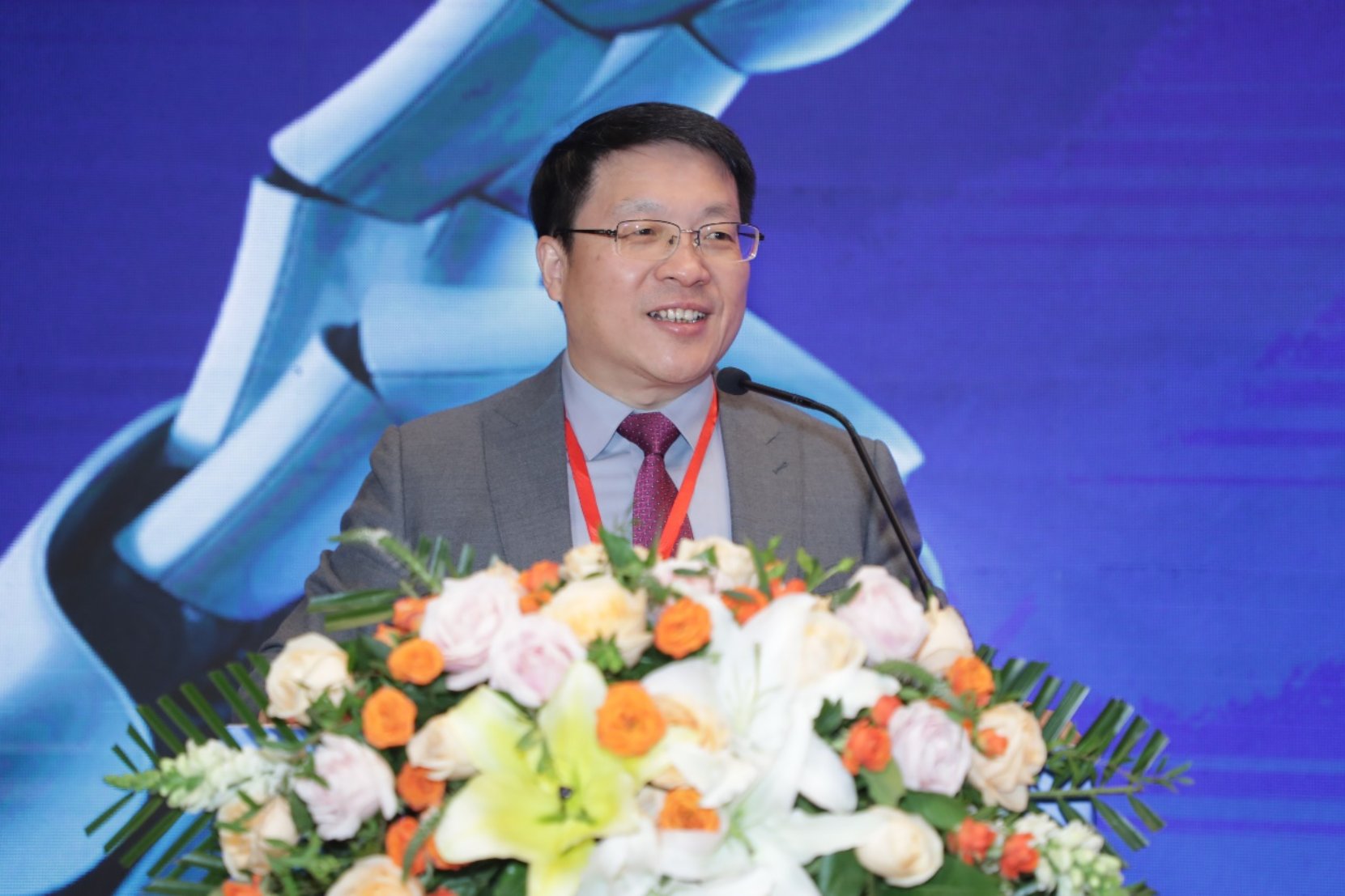
Opening address by Professor XIANG Hua
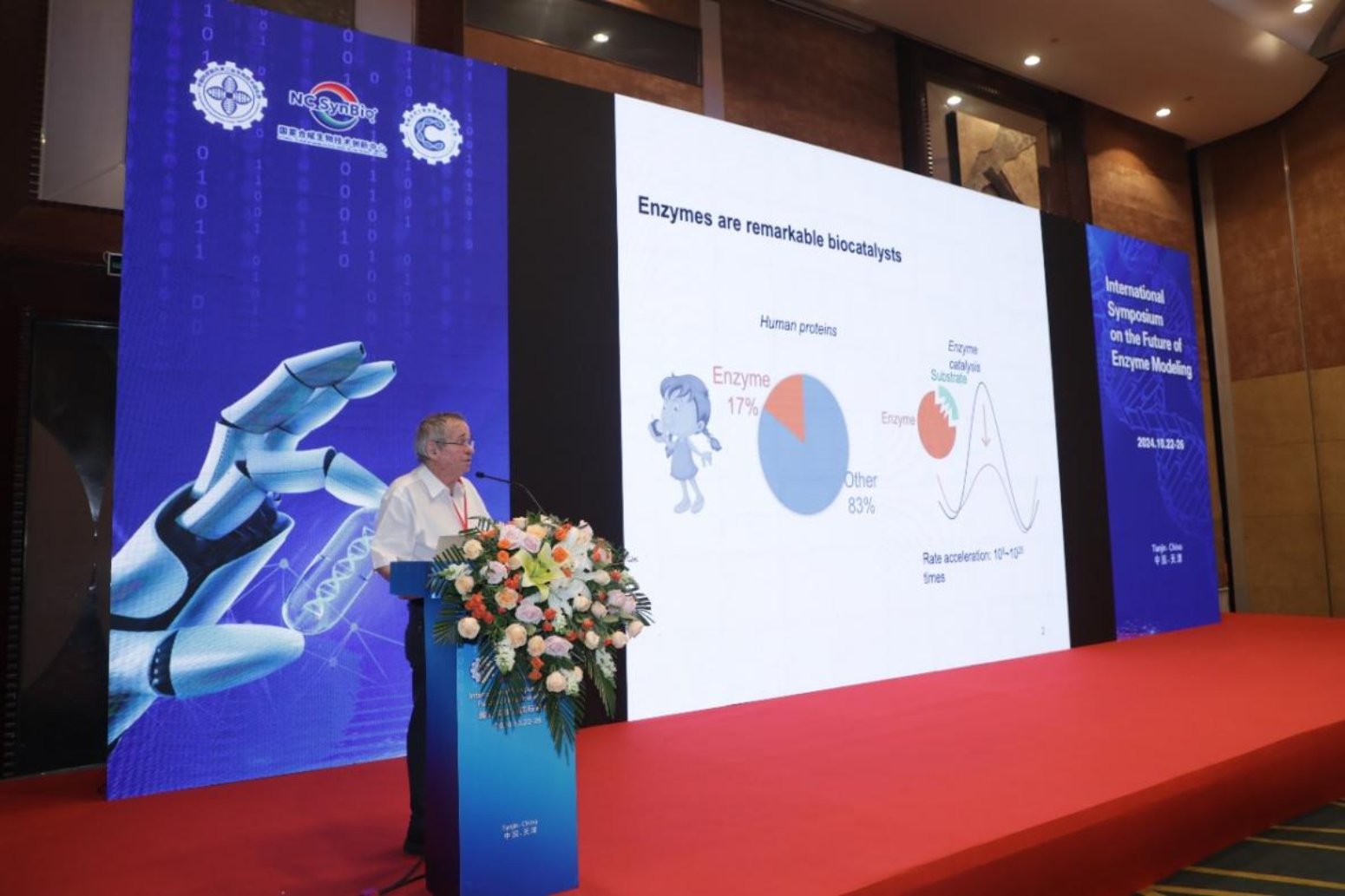
Keynote lecture by Professor Arieh Warshel
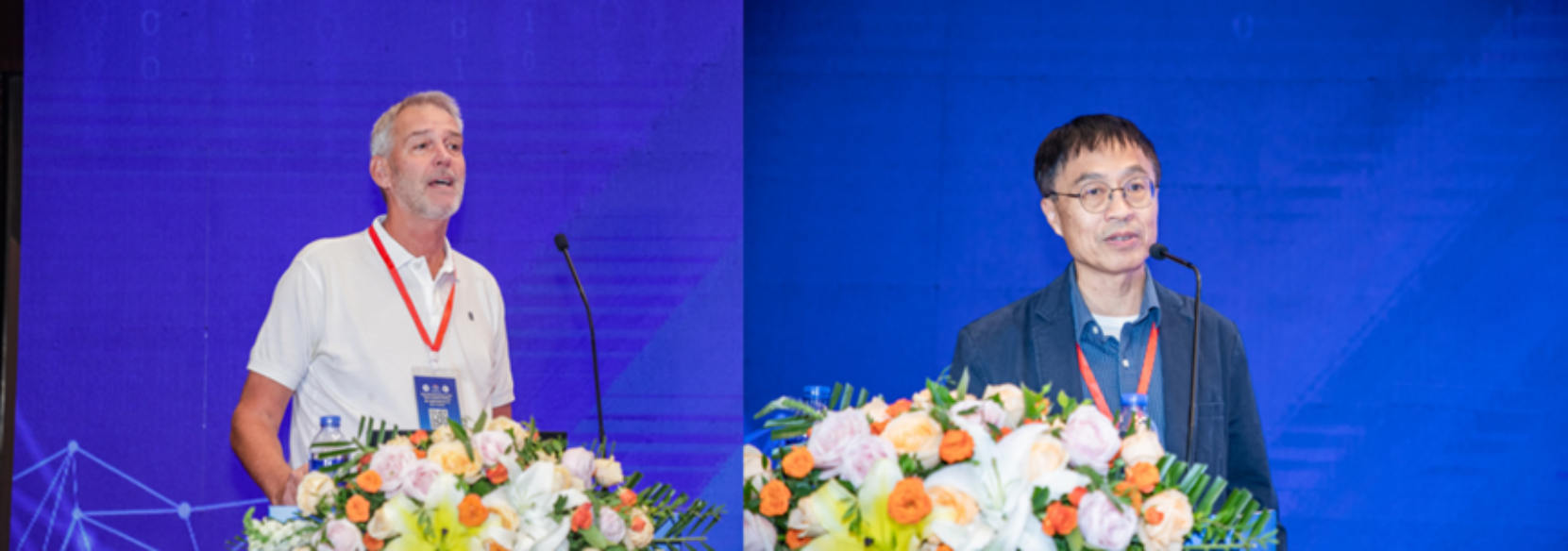
Presentations by Professor Johan Åqvist and Professor GAO Jiali
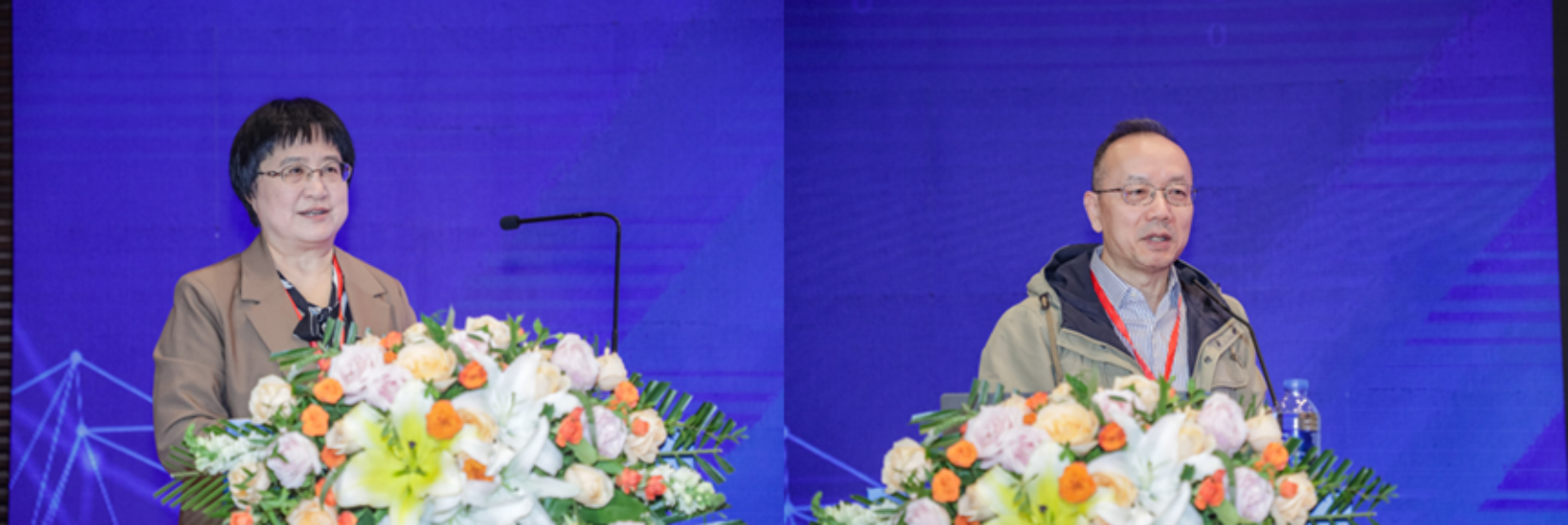
Presentations by Professor LAI Luhua and Professor ZHANG John Zenghui

Professor SHENG Xiangpresided the opening ceremony

Group photo of the invited guests

Visit to the TIBCAS
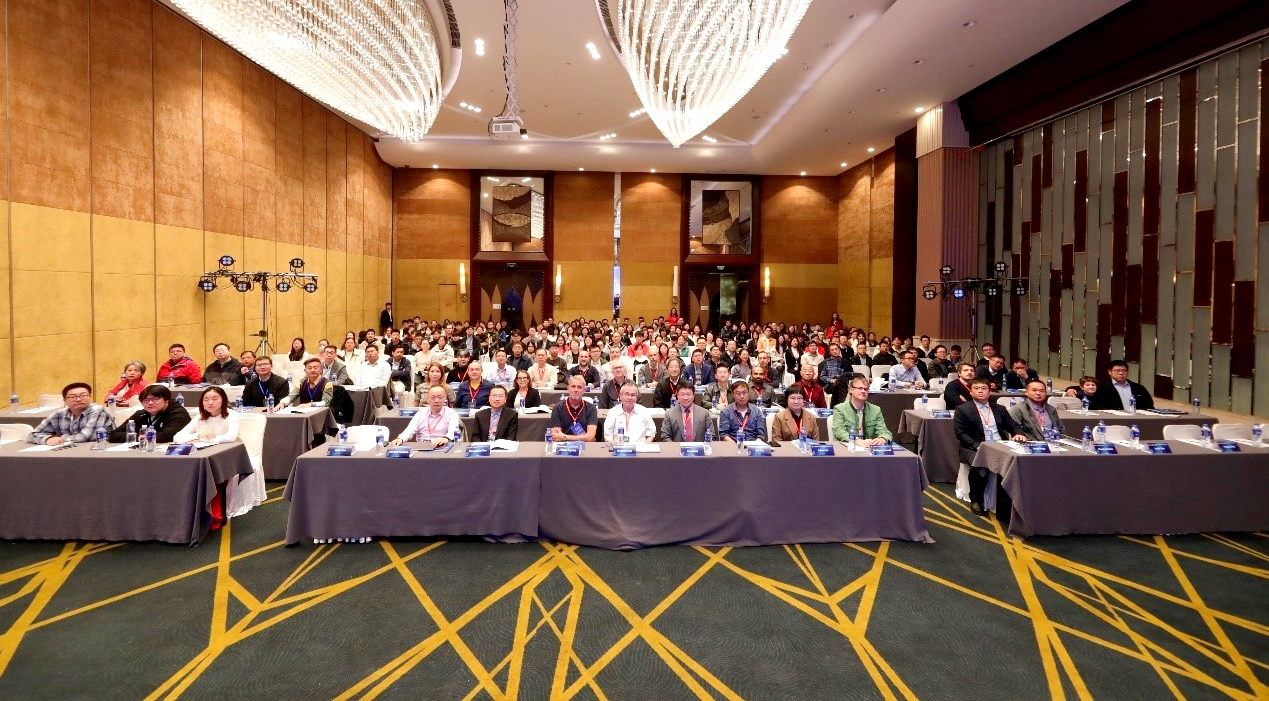
Photo of the conference
